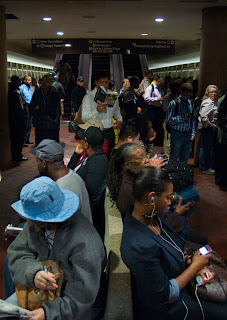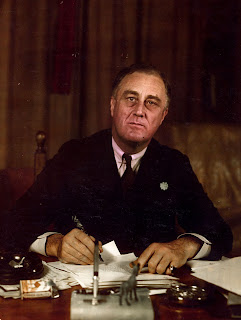Tuesday, September 25, 2012
Commuted Sentences, In Passing
"What's on your mind?" An opportunity to post on Facebook phrase that leads off your Facebook page. This got me thinking as to what was on my mind, visually, and so I started to assemble pictures I took on my way back and forth to work, commuting. My day job is studio photography, an excercise in obssesive placement of objects, lights, reflectors, gobos, fishing line, mirrors, and cameras. Then the post processing obcessions, layering, darkening, lightening, touching up, spotting. It's high res cameras, exspensive lenses, expensive lighting equipment, and patience . Commuted Sentences and In Passing are two projects that have only the camera and obcessive post processing in common. A simple and maddeningly finicky Canon G5 camera and whatever passes across my mind relative to commuting replaces the studio. It is an excercise in lack of control, I see what I want, but Idon't always get it. When I get something the sentences come from what friend calls "flypaper memory" , that and Wikipedia research. Enough words, some pictures.....
Monday, September 24, 2012
Thursday, September 6, 2012
Oscar Jordan Finlay Color FDR portrait
At the risk of repeating myself, a common affliction, or affectation, perhaps, I offer this restoration of an early color process. While I was working at the National Archives Photo Unit, the Office of
Presidential Libraries came across a collection of Finlay Color transparencies and negatives. Finlay Color was an additive color process using a glass red, green, blue, color dot "taking" screen loaded in a special holder with a black and white glass negative. The resulting negative contained a dot pattern of densities corresponding to the color pattern. A glass positive was made and then aligned to a glass color "viewing" screen when the two were in alignment a color positive image could be seen and the two were bound together. The Presidential Libraries collection had several bound positives, but also a collection of unbound negatives.In addition there were a few "taking" and "viewing" screens Ektachromes of the bound positives were made as well as film positives of the black and white negatives. With the cooperation of the Smithsonian Institution's Office of Printing and Photographic Services I brought the film positives and the viewing screen to the Photographic Services lab at the Museum of American History. There I aligned the film positive with the viewing screen and photographed the resulting positive on 8X10 Ektachrome film using a process camera and lightbox. This portrait of President Franklin Roosevelt was one of those images. Oh and by the way, the Smithsonian offered me a job.
Presidential Libraries came across a collection of Finlay Color transparencies and negatives. Finlay Color was an additive color process using a glass red, green, blue, color dot "taking" screen loaded in a special holder with a black and white glass negative. The resulting negative contained a dot pattern of densities corresponding to the color pattern. A glass positive was made and then aligned to a glass color "viewing" screen when the two were in alignment a color positive image could be seen and the two were bound together. The Presidential Libraries collection had several bound positives, but also a collection of unbound negatives.In addition there were a few "taking" and "viewing" screens Ektachromes of the bound positives were made as well as film positives of the black and white negatives. With the cooperation of the Smithsonian Institution's Office of Printing and Photographic Services I brought the film positives and the viewing screen to the Photographic Services lab at the Museum of American History. There I aligned the film positive with the viewing screen and photographed the resulting positive on 8X10 Ektachrome film using a process camera and lightbox. This portrait of President Franklin Roosevelt was one of those images. Oh and by the way, the Smithsonian offered me a job.
Sunday, September 2, 2012
Digital Conversions with Prosumer Camera
More digital conversions from slides, this time using a prosumer Nikon dD90 with the Bowens Illumitrans. I'm liking the results.
Subscribe to:
Comments (Atom)














